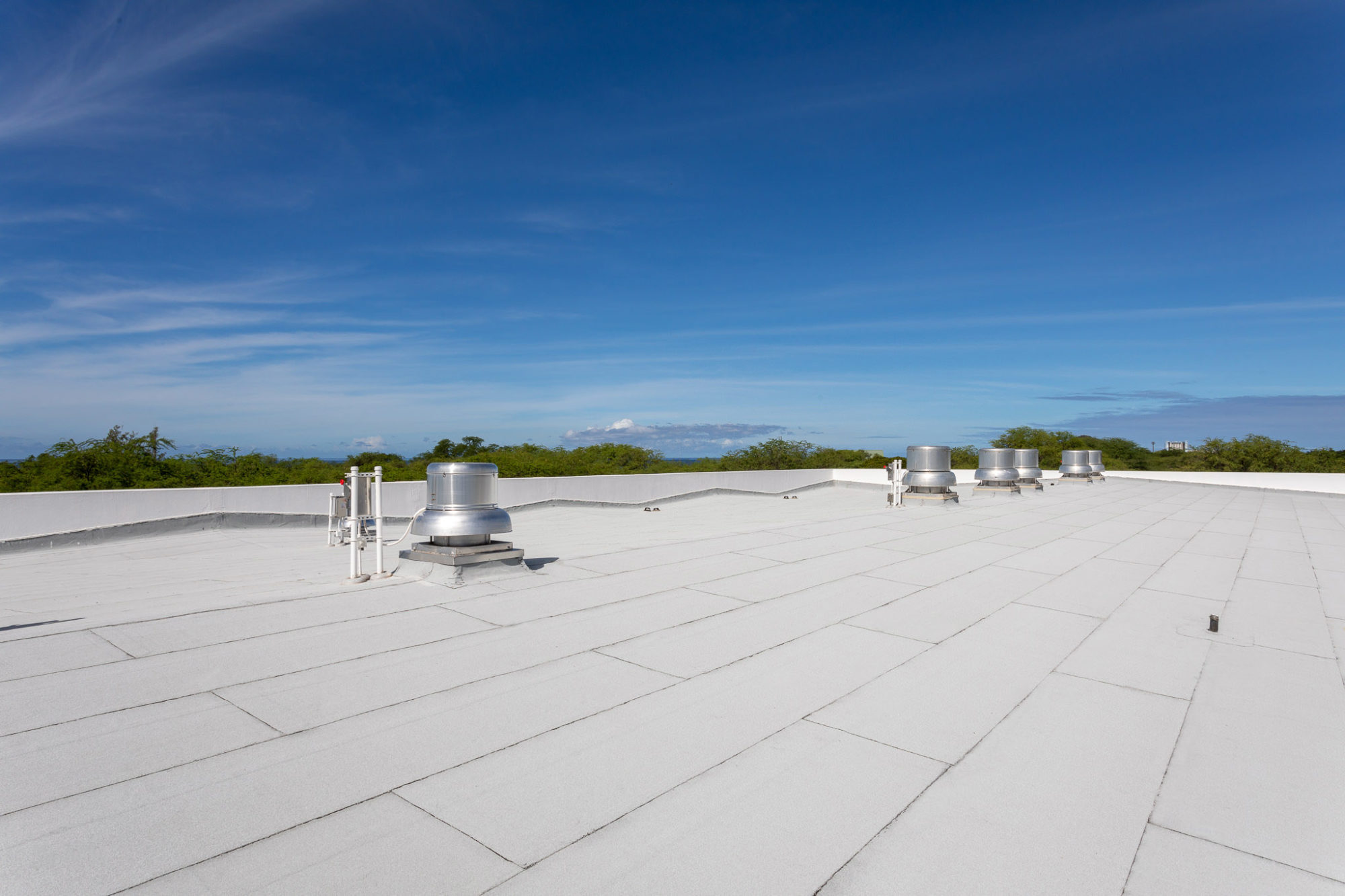The latest environmental focus on using “cooler” surfaces to reduce Urban Heat Island (UHI) effects in urban spaces has led many to desire materials with increased reflectivity and emissivity. At this same time, the built environment has increased its focus to include all exposed building surfaces, such as the four walls, and not just building tops or roofs. Is this a new trend or fad, or is it a concept that has been around for decades and is just not widely discussed? Truth be told, it’s a bit of both. Let’s look at why.
A History of “Cool” Building Materials
Various water-based acrylic materials types have already been used in the construction industry for several decades, and light colors are also not new in construction. For example, whitewashing wood and other permeable surfaces is not a solution from the 21st century but the century before, with a history of 100-plus years.
From this perspective, using light colors in construction is not a contemporary fad but a historical approach. Granted, their earlier application was more about surface protection and aesthetics than cooling building surfaces, but light colors were effective just the same.
In addition, long before we gave much to UHI effects, reflective coating materials were widely used in the built environment to protect underlying surfaces and, at the same time, cool surfaces.
As we discover and use new technology to formulate protective coatings, they become more effective at cooling the surfaces they are applied to and protecting them from UV damage. One example is the growing understanding of using titanium dioxide (TiO2) and other UV-inhibiting materials in acrylics for a roof or wall coating to create “cooler” surfaces.
Acrylics – A Means of Sustainable Surface Cooling and Protection
Various products and gadgetry are sold and promoted to protect surfaces, many with promises too good to be true. That said, using acrylic polymers, protective coatings are very effective at protecting and cooling the surface and typically use light colors, such as whites and off-whites. These are also the most cost-effective for use on roofs to cool and protect them.
Top Benefits of Acrylic-Based Roof Coatings
Many manufacturers and varieties of acrylic-based coatings are available to coat most roofing membrane types. Depending on the make-up of the roof surface, preparation and primers are not only recommended but may be necessary if a good adhesive bond is to be achieved.
Building owners, developers, and environmental-based agencies pursuing greater sustainability are looking for product longevity first and foremost. For obvious reasons, the greater its durability, the less often a roofing product must be replaced, which ultimately keeps waste out of landfills and other waste streams.
Using acrylics to protect new and existing roof systems is a viable and cost-effective means to add longevity to any structure, be it for vertical (walls) or horizontal (roofs) surfaces. Acrylic formulations offer not only high reflectivity and surface cooling but also deliver the bonus of surface protection. This keeps the damaging effects of UV exposure from directly impacting the surface. The less degradation, the longer the coating and the underlying materials (i.e., roof surface) will last, which extends the life of the roof and building and promotes sustainability.
As we coat the walls and roofs of new buildings with exterior paints or other finishes, these surfaces can also greatly profit from a protective acrylic coating. Like the benefits of sunblock on your skin to prevent sunburn, a quality acrylic coating applied to a new(er) roof will protect it from the damaging effect of years of UV exposure.
Even less common roof types and conditions can benefit from a protective acrylic coating. Examples include architectural and structural metal roofs, buildings, and many single-ply membranes. Unusual and specialized constructions are also candidates for the benefits of acrylic coatings.
Your Work is as Good as Your Product Choice
It is vital to ensure your product choice is suitable for all known project conditions. Research information (from Product Data Sheets, for example) on the product before a final decision, and when in doubt, reach out to Polyglass U.S.A., Inc.
Polyglass offers various acrylic polymer-based coatings and accessories to suit your projects’ needs. You can rely on our Polyglass experts to assist you through the product selection process and to answer all your roof design and installation queries.


